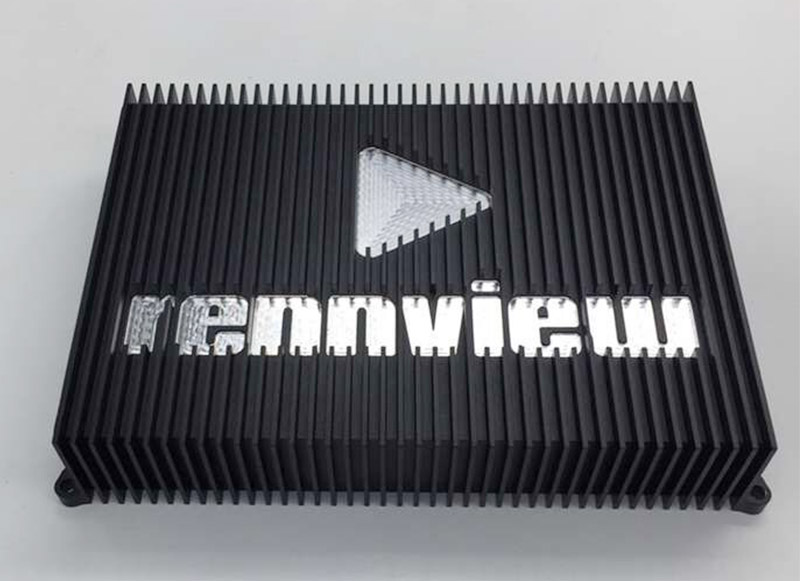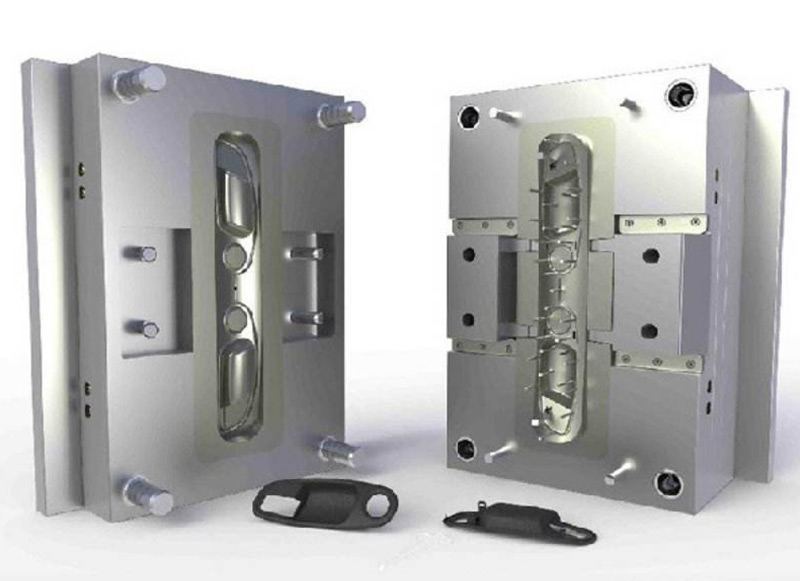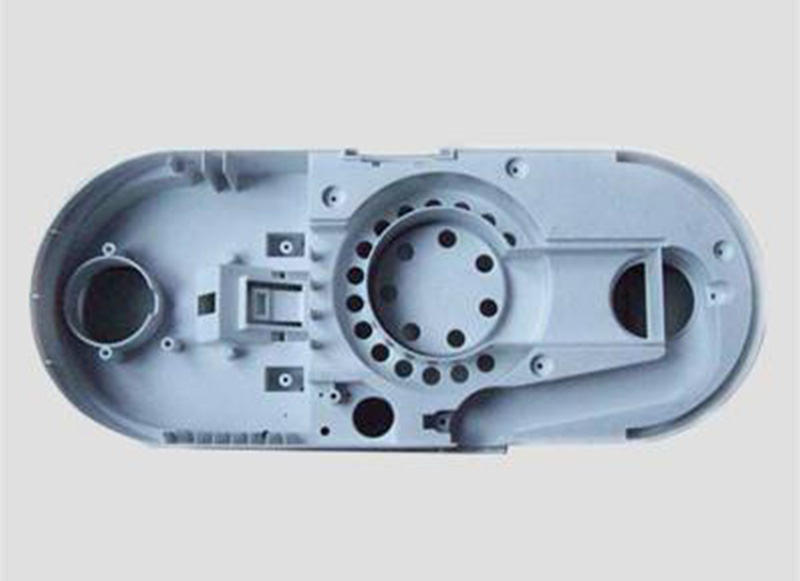The installation location of the CNC Aluminum Part production equipment
The installation location of CNC aluminum part production equipment will depend on the size and type of equipment being used. Generally, the equipment should be installed in a clean, dry, and well-ventilated area that is free from dust and other contaminants. The area should also have adequate space for the equipment to be moved around and for any necessary maintenance or repairs. Additionally, the area should have access to power and other utilities, such as compressed air and water.
CNC Aluminum Part equipment
The use environment of CNC Aluminum Part production equipment
CNC aluminum part production equipment is typically used in industrial settings, such as factories and workshops. It is used to produce parts for a variety of applications, including automotive, aerospace, medical, and consumer products. The equipment is used to cut, shape, and finish aluminum parts with precision and accuracy. It is also used to create complex shapes and intricate details. The equipment is typically operated by a skilled technician who is trained in the use of the machine and its software.
How to operate the CNC Aluminum Part production equipment
1. Set up the CNC machine: Install the CNC machine in a safe and secure area, making sure that it is level and that all of the components are securely fastened.
2. Program the CNC machine: Use the appropriate software to program the CNC machine with the desired cutting parameters.
3. Load the material: Load the aluminum material into the CNC machine, making sure that it is securely fastened.
4. Start the CNC machine: Turn on the CNC machine and make sure that all of the safety features are enabled.
5. Monitor the CNC machine: Monitor the CNC machine during the cutting process to ensure that it is operating correctly.
6. Unload the material: Once the cutting process is complete, unload the aluminum material from the CNC machine.
7. Clean up the CNC machine: Clean up the CNC machine and make sure that all of the components are in good working order.

What equipment is needed to produce CNC Aluminum Part
1. CNC Machine: A CNC machine is the most important piece of equipment needed to produce CNC aluminum parts. This machine is used to cut and shape the aluminum into the desired shape. It can be a milling machine, a lathe, or a combination of both.
2. CAD/CAM Software: CAD/CAM software is used to create the design of the part and to program the CNC machine. This software is used to create the tool paths that the CNC machine will follow to cut the aluminum.
3. Cutting Tools: Cutting tools are used to cut the aluminum. These tools can be end mills, drills, reamers, taps, and other cutting tools.
4. Workholding Devices: Workholding devices are used to hold the aluminum in place while it is being cut. These devices can be clamps, vises, or other specialized fixtures.
5. Coolant: Coolant is used to keep the cutting tools and aluminum cool while they are being cut. This helps to prevent the aluminum from melting or warping due to the heat generated by the cutting process.
6. Safety Equipment: Safety equipment is necessary to protect the operator from the hazards associated with CNC machining. This includes safety glasses, hearing protection, and other protective gear.
Safety measures for CNC Aluminum Part production equipment
1. Ensure that all operators are properly trained and certified in the use of CNC aluminum part production equipment.
2. Ensure that all operators wear the appropriate safety gear, such as safety glasses, gloves, and hearing protection.
3. Ensure that all operators are aware of the potential hazards associated with the use of CNC aluminum part production equipment.
4. Ensure that all operators are aware of the proper safety procedures for operating the equipment.
5. Ensure that all operators are aware of the proper maintenance and cleaning procedures for the equipment.
6. Ensure that all operators are aware of the proper emergency procedures in the event of an accident or malfunction.
7. Ensure that all operators are aware of the proper disposal procedures for any hazardous materials used in the production process.
8. Ensure that all operators are aware of the proper storage procedures for any hazardous materials used in the production process.
9. Ensure that all operators are aware of the proper safety protocols for handling any hazardous materials used in the production process.
10. Ensure that all operators are aware of the proper safety protocols for handling any hazardous waste generated during the production process.
Regular maintenance and maintenance of CNC Aluminum Part production equipment
1. Regularly check the lubrication of the CNC Aluminum Part production equipment, and add lubricating oil to the parts that need to be lubricated in time.
2. Regularly check the fastening parts of the CNC Aluminum Part production equipment, and tighten the loose parts in time.
3. Regularly check the electrical components of the CNC Aluminum Part production equipment, and replace the aging parts in time.
4. Regularly check the transmission parts of the CNC Aluminum Part production equipment, and replace the worn parts in time.
5. Regularly check the cooling system of the CNC Aluminum Part production equipment, and clean the cooling system in time.
6. Regularly check the dust removal system of the CNC Aluminum Part production equipment, and clean the dust removal system in time.
7. Regularly check the CNC Aluminum Part production equipment, and clean the dirt on the surface of the equipment in time.
8. Regularly check the CNC Aluminum Part production equipment, and adjust the gap between the parts in time.
9. Regularly check the CNC Aluminum Part production equipment, and replace the worn parts in time.
10. Regularly check the CNC Aluminum Part production equipment, and replace the worn parts in time.
Emission standards and environmental protection requirements for CNC Aluminum Part production equipment
CNC aluminum part production equipment must meet the following environmental protection requirements:
1. The equipment must meet the requirements of the local environmental protection department for noise and dust emissions.
2. The equipment must be equipped with a dust collection system to reduce dust emissions.
3. The equipment must be equipped with an exhaust system to reduce the emission of harmful gases.
4. The equipment must be equipped with a cooling system to reduce the temperature of the working environment.
5. The equipment must be equipped with a water treatment system to reduce the amount of wastewater discharged.
6. The equipment must be equipped with a waste recycling system to reduce the amount of waste generated.
Scrapping, dismantling and recycling process of CNC Aluminum Part production equipment
1. Disassembly: The first step in the scrapping, dismantling and recycling process of CNC aluminum part production equipment is to disassemble the equipment. This involves removing all components, such as motors, pumps, and other parts, from the machine.
2. Sorting: Once the components have been removed, they must be sorted into different categories. This includes sorting by material type, such as aluminum, steel, and plastic.
3. Scrapping: The next step is to scrap the components that are no longer usable. This includes removing any parts that are too damaged or worn to be reused.
4. Recycling: The components that are still usable can be recycled. This includes separating the metals and plastics and sending them to the appropriate recycling centers.
5. Reuse: Any components that are still usable can be reused in other machines or sold to other companies. This helps to reduce the amount of waste that is produced.
6. Disposal: The final step is to dispose of any components that cannot be reused or recycled. This includes sending them to a landfill or other appropriate disposal facility.
The replacement and update cycle of CNC Aluminum Part production equipment
The replacement and update cycle of CNC Aluminum Part production equipment depends on the specific needs of the production process. Generally, the replacement and update cycle of CNC Aluminum Part production equipment is determined by the following factors:
1. The production capacity of the equipment: The production capacity of the equipment is the most important factor in determining the replacement and update cycle of the equipment. If the production capacity of the equipment is not enough to meet the production needs, then the equipment needs to be replaced or updated.
2. The quality of the parts produced: The quality of the parts produced by the equipment is also an important factor in determining the replacement and update cycle of the equipment. If the quality of the parts produced by the equipment is not up to the required standards, then the equipment needs to be replaced or updated.
3. The cost of the equipment: The cost of the equipment is also an important factor in determining the replacement and update cycle of the equipment. If the cost of the equipment is too high, then the equipment needs to be replaced or updated.
4. The technology used in the equipment: The technology used in the equipment is also an important factor in determining the replacement and update cycle of the equipment. If the technology used in the equipment is outdated, then the equipment needs to be replaced or updated.
Analysis of the use cost and operating cost of CNC Aluminum Part production equipment
The cost of using CNC aluminum part production equipment depends on the type of equipment and the complexity of the parts being produced. Generally speaking, the cost of using CNC aluminum part production equipment is higher than that of manual production equipment. This is due to the fact that CNC machines require more sophisticated programming and more complex machining operations.
The operating cost of CNC aluminum part production equipment is also higher than that of manual production equipment. This is because CNC machines require more maintenance and more frequent repairs. Additionally, CNC machines require more energy to operate, which increases the cost of electricity.
In terms of the cost of materials, CNC aluminum part production equipment is more expensive than manual production equipment. This is because CNC machines require more precise cutting and machining operations, which require more expensive materials. Additionally, CNC machines require more specialized tools and fixtures, which can be costly.
Overall, the use cost and operating cost of CNC aluminum part production equipment is higher than that of manual production equipment. However, the cost of using CNC machines is often offset by the increased efficiency and accuracy of the parts produced. Additionally, CNC machines can produce parts with greater complexity and precision, which can be beneficial for certain applications.

Reliability requirements for CNC Aluminum Part production equipment
1. The CNC Aluminum Part production equipment must be able to operate continuously for at least 8 hours without any downtime.
2. The CNC Aluminum Part production equipment must be able to produce parts with a tolerance of +/- 0.005 inches.
3. The CNC Aluminum Part production equipment must be able to produce parts with a surface finish of 8-12 Ra.
4. The CNC Aluminum Part production equipment must be able to produce parts with a minimum wall thickness of 0.125 inches.
5. The CNC Aluminum Part production equipment must be able to produce parts with a maximum wall thickness of 0.250 inches.
6. The CNC Aluminum Part production equipment must be able to produce parts with a minimum hole diameter of 0.125 inches.
7. The CNC Aluminum Part production equipment must be able to produce parts with a maximum hole diameter of 0.250 inches.
8. The CNC Aluminum Part production equipment must be able to produce parts with a minimum radius of 0.125 inches.
9. The CNC Aluminum Part production equipment must be able to produce parts with a maximum radius of 0.250 inches.
10. The CNC Aluminum Part production equipment must be able to produce parts with a minimum thread pitch of 0.125 inches.
11. The CNC Aluminum Part production equipment must be able to produce parts with a maximum thread pitch of 0.250 inches.
12. The CNC Aluminum Part production equipment must be able to produce parts with a minimum thread depth of 0.125 inches.
13. The CNC Aluminum Part production equipment must be able to produce parts with a maximum thread depth of 0.250 inches.
14. The CNC Aluminum Part production equipment must be able to produce parts with a minimum chamfer angle of 45 degrees.
15. The CNC Aluminum Part production equipment must be able to produce parts with a maximum chamfer angle of 90 degrees.
16. The CNC Aluminum Part production equipment must be able to produce parts with a minimum fillet radius of 0.125 inches.
17. The CNC Aluminum Part production equipment must be able to produce parts with a maximum fillet radius of 0.250 inches.
18. The CNC Aluminum Part production equipment must be able to produce parts with a minimum hole depth of 0.125 inches.
19. The CNC Aluminum Part production equipment must be able to produce parts with a maximum hole depth of 0.250 inches.
20. The CNC Aluminum Part production equipment must be able to produce parts with a minimum slot width of 0.125 inches.
21. The CNC Aluminum Part production equipment must be able to produce parts with a maximum slot width of 0.250 inches.
Relevant legal and regulatory requirements for CNC Aluminum Part production equipment
1. Occupational Safety and Health Administration (OSHA) Regulations: OSHA regulations are designed to protect workers from potential hazards associated with the use of CNC aluminum part production equipment. These regulations include requirements for machine guarding, lockout/tagout procedures, and personal protective equipment.
2. Environmental Protection Agency (EPA) Regulations: The EPA regulates the emissions of hazardous air pollutants (HAPs) from CNC aluminum part production equipment. These regulations require manufacturers to install and maintain pollution control equipment to reduce emissions of HAPs.
3. National Fire Protection Association (NFPA) Standards: NFPA standards provide guidance on the safe installation and use of CNC aluminum part production equipment. These standards cover topics such as fire protection, electrical safety, and ventilation.
4. American National Standards Institute (ANSI) Standards: ANSI standards provide guidance on the design, construction, and use of CNC aluminum part production equipment. These standards cover topics such as machine safety, ergonomics, and noise control.
5. International Organization for Standardization (ISO) Standards: ISO standards provide guidance on the design, construction, and use of CNC aluminum part production equipment. These standards cover topics such as machine safety, ergonomics, and noise control.
